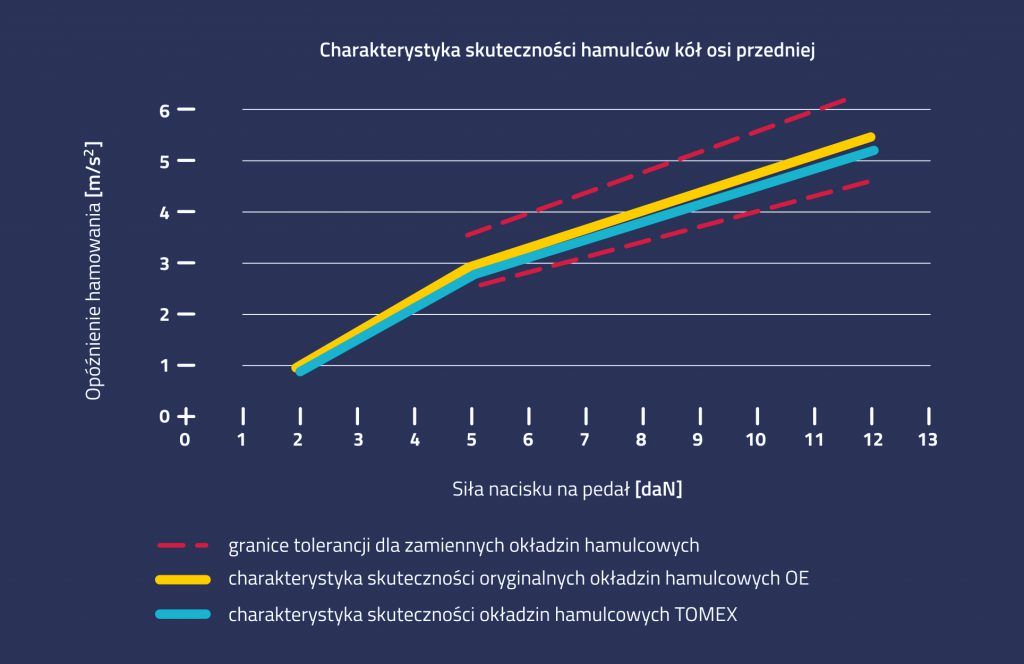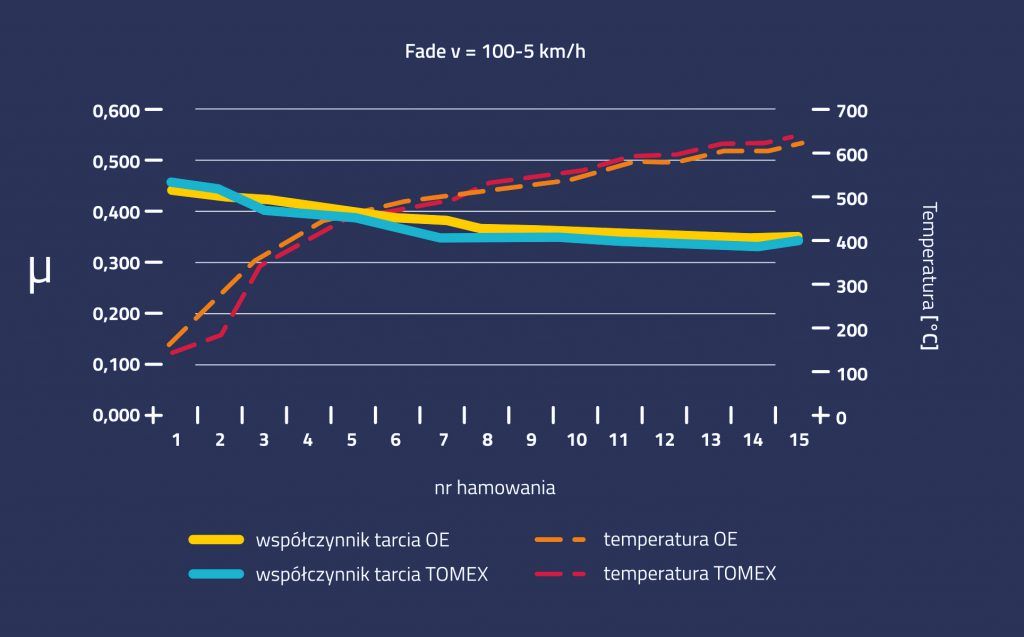The result of the work of TOMEX engineers, as well as hundreds of hours on test tracks, is a new friction material that meets the highest legal requirements throughout the EU and ensures braking comfort in all road conditions.
Regulation ECE R-90 as part of Directive 98/12 / EC on braking devices, which entered into force on January 1, 1999 and has been obligatorily applied since April 2001, guarantees that the parameters of friction linings for disc and drum brakes may differ from the original ones only by +/- 15% maximum. Thus, TOMEX’s compliance with all the requirements of the ECE-R90 regulation is a guarantee of the highest quality.


